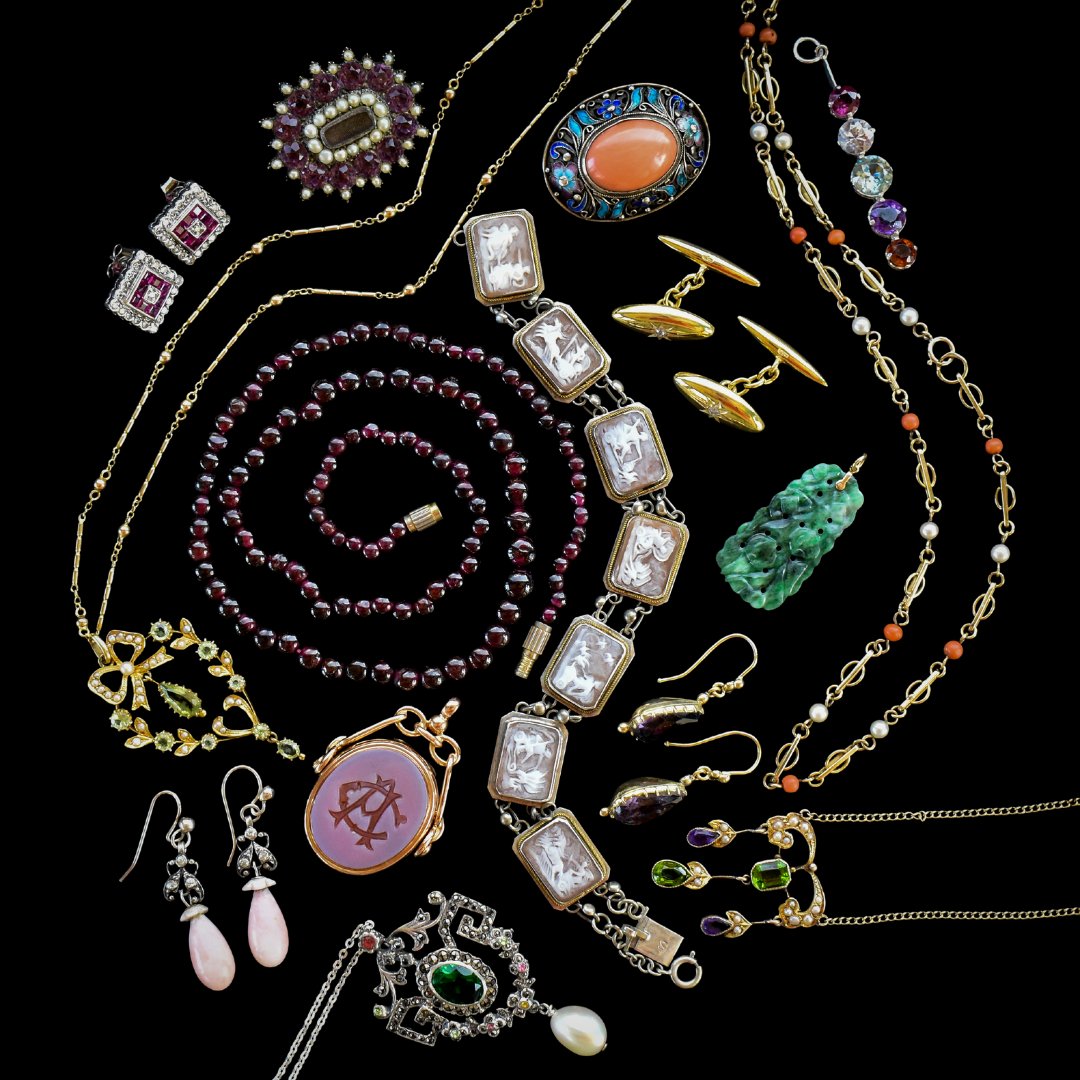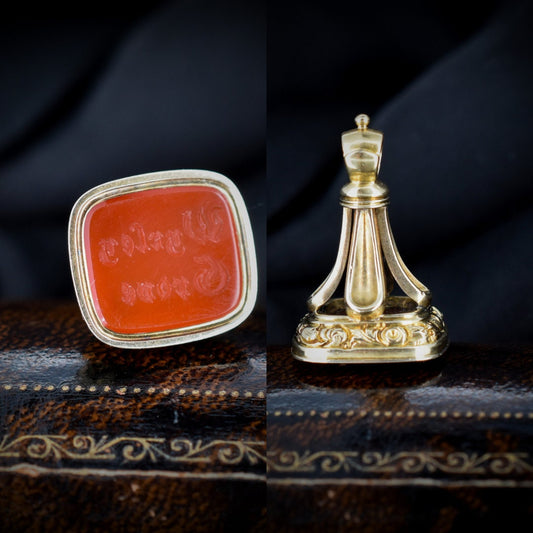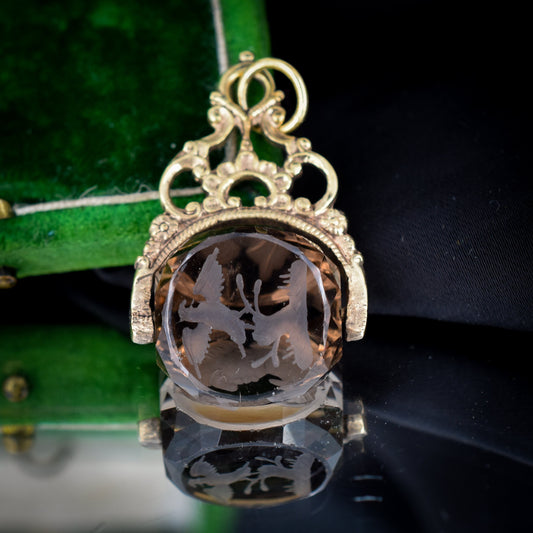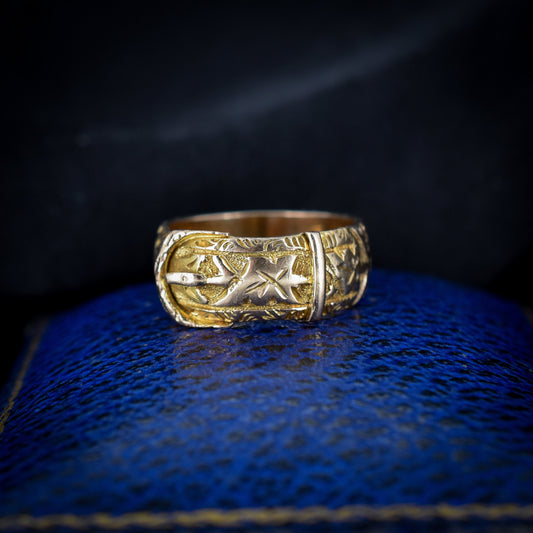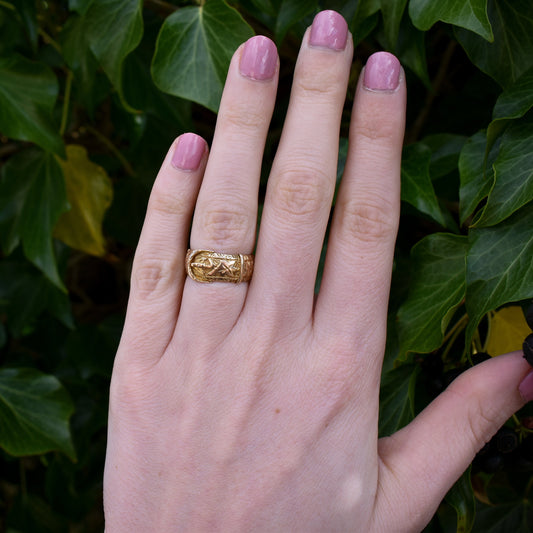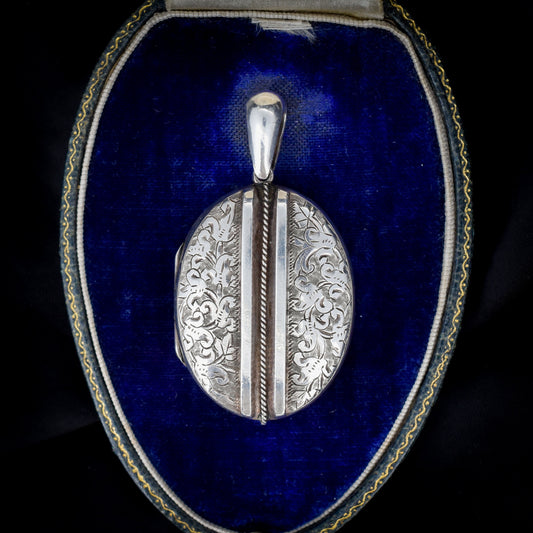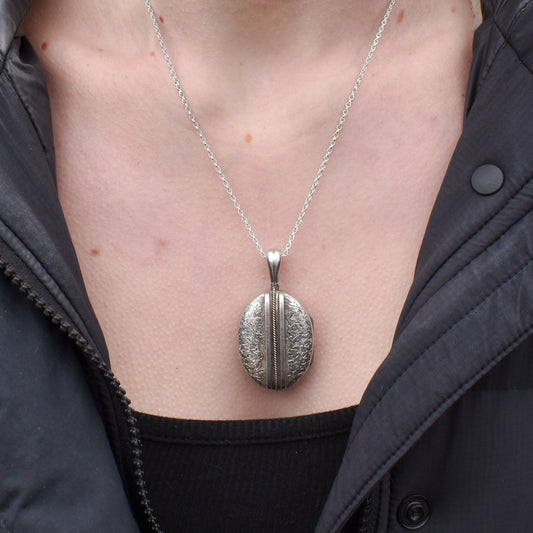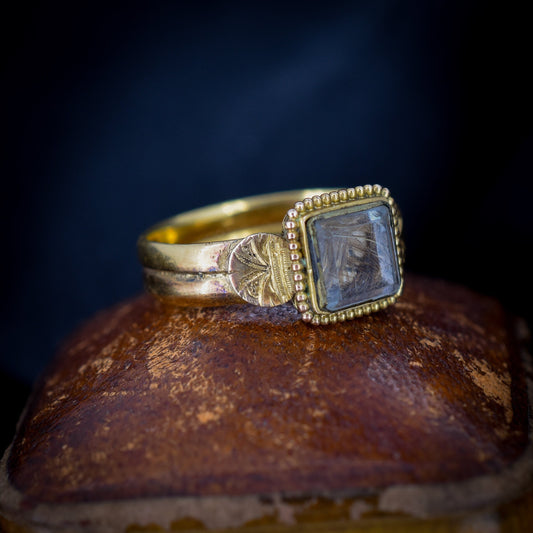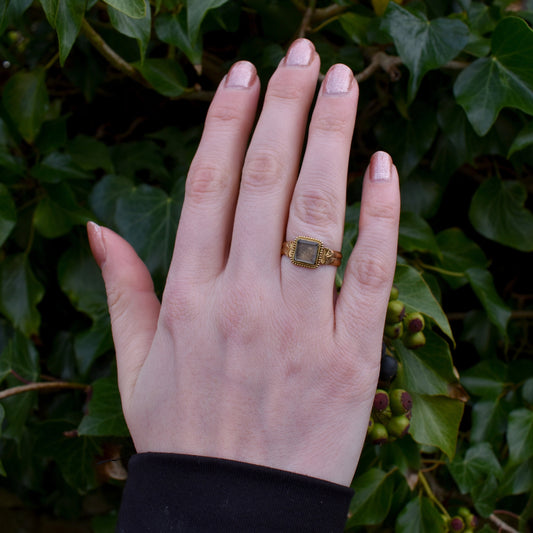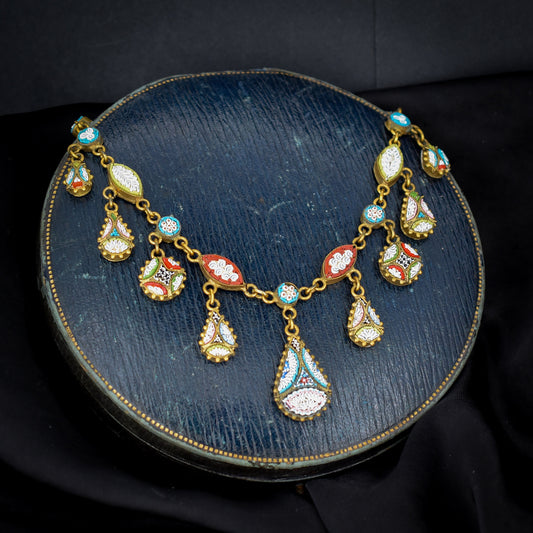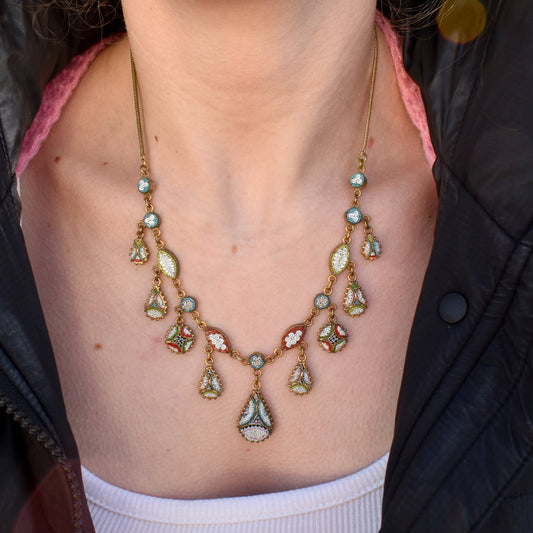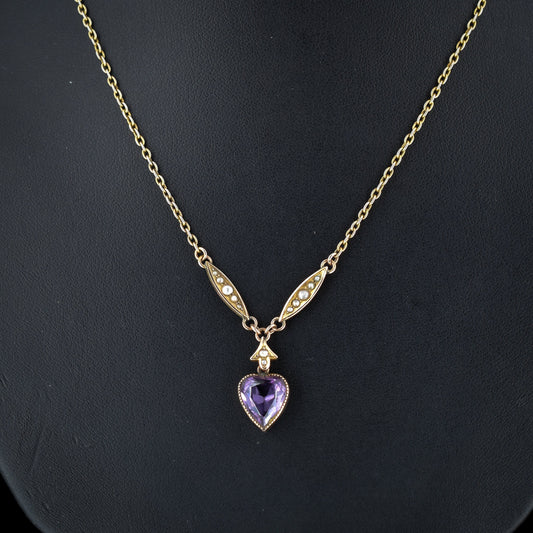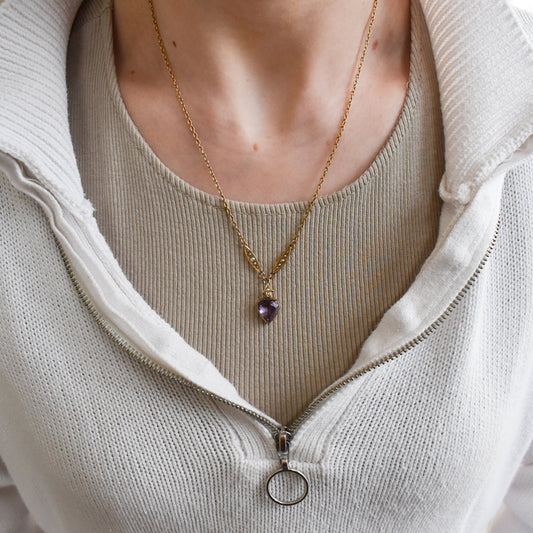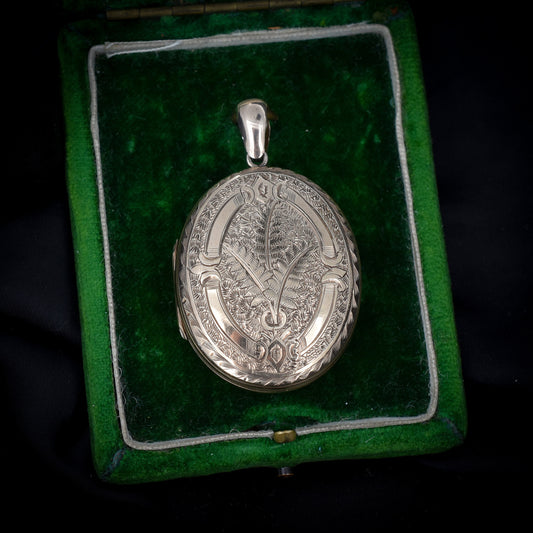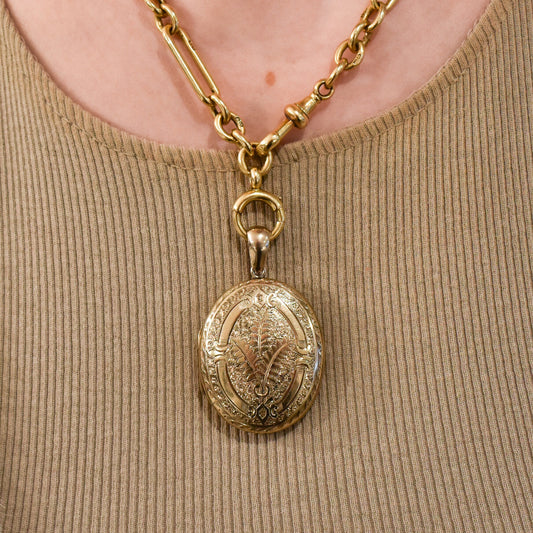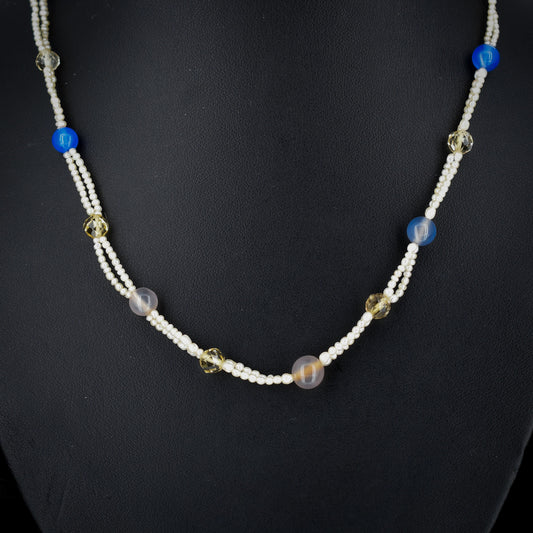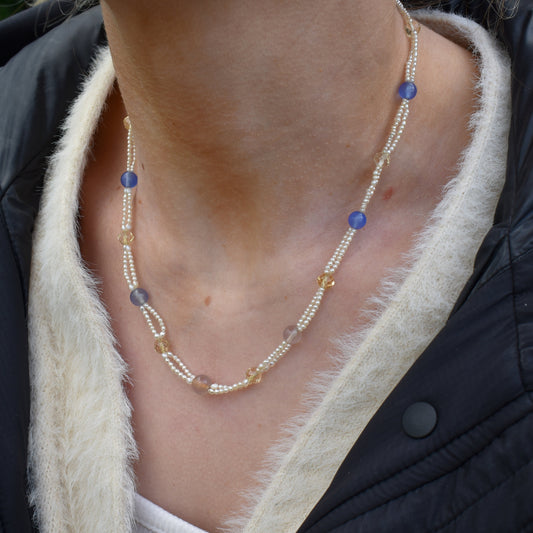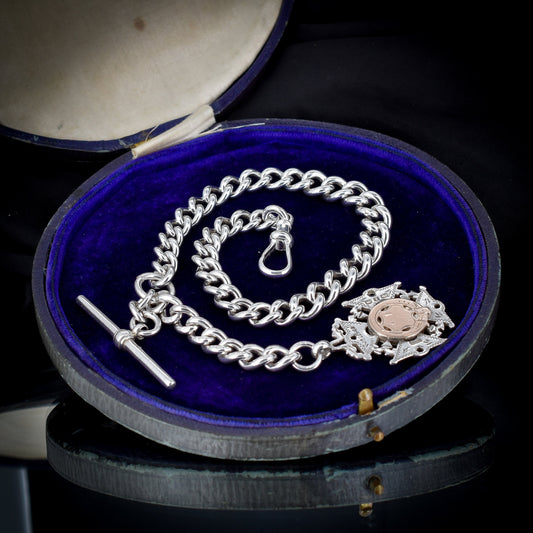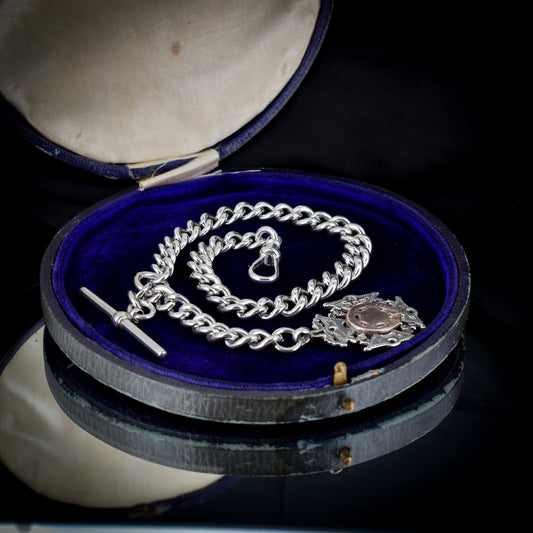-
Antique Old Cut Diamond and Opal Three Stone 18ct Gold Ring Band | Dated 1895
Precio habitual £485.00 GBPPrecio habitualPrecio unitario por -
Antique Moonstone and Pearl Silver Bug Insect Brooch Pin | Victorian
Precio habitual £345.00 GBPPrecio habitualPrecio unitario por -
Boxed Antique Pheasant Bird Paste Sterling Silver Brooch Pin | Victorian
Precio habitual £245.00 GBPPrecio habitualPrecio unitario por -
Antique 'Wyrley Grove' Intaglio Gold Bell Fob Seal Pendant | Victorian
Precio habitual £475.00 GBPPrecio habitualPrecio unitario por -
Antique Smoky Quartz Intaglio Gold Cased Spinning Fob Seal Pendant
Precio habitual £375.00 GBPPrecio habitualPrecio unitario por -
Antique Victorian Engraved Buckle Belt 18ct Gold Ring Band | Dated 1887
Precio habitual £695.00 GBPPrecio habitualPrecio unitario por -
Colgante con medallón con foto grabada de hiedra ovalada de plata de ley antigua | victoriano
Precio habitual £225.00 GBPPrecio habitualPrecio unitario por -
Anillo de oro amarillo de 15 quilates con sello de escudo de ágata con bandas victorianas antiguas
Precio habitual £465.00 GBPPrecio habitualPrecio unitario por -
Anillo de banda de luto de oro amarillo antiguo victoriano de 22 quilates y 22 quilates
Precio habitual £675.00 GBPPrecio habitualPrecio unitario por -
Collar victoriano antiguo con flecos y micromosaico
Precio habitual £295.00 GBPPrecio habitualPrecio unitario por -
Anillo antiguo de banda de oro con serpiente de rubí y pasta
Precio habitual £425.00 GBPPrecio habitualPrecio unitario por -
Collar de cadena y colgante de gota de oro amarillo de 9 quilates con forma de corazón de perlas y amatista antiguo
Precio habitual £395.00 GBPPrecio habitualPrecio unitario por -
Medallón de luto antiguo de cristal ovalado grabado en oro de 9 quilates | victoriano
Precio habitual £395.00 GBPPrecio habitualPrecio unitario por -
Collar antiguo de oro de 9 quilates con citrino y calcedonia de doble hebra
Precio habitual £475.00 GBPPrecio habitualPrecio unitario por -
Cadena de reloj Albert de eslabones curb de plata de ley victoriana antigua con barra en T, medalla y clip para perro
Precio habitual £245.00 GBPPrecio habitualPrecio unitario por -
Colgante victoriano antiguo con dije de silbato de plata de ley
Precio habitual £145.00 GBPPrecio habitualPrecio unitario por
Your Victorian Jewellery Questions Answered
How can you tell if jewellery is Victorian?
To determine if jewellery is from the Victorian era, consider these factors:
- Style: Look for designs characteristic of the Victorian era, such as intricate filigree work, nature-inspired motifs (flowers, leaves), and symbolic designs (hearts, snakes).
- Materials: Victorian jewellery often used gold, silver, or rolled gold, and gemstones like diamonds, pearls, amethysts, and garnets.
- Construction: Examine the craftsmanship; Victorian jewellery is known for its fine detail and intricate settings.
- Hallmarks: Check for hallmarks or maker's marks on the jewellery, though not all Victorian jewellery was stamped.
- Clasps and Fastenings: Victorian jewellery may have unique clasps and fastenings specific to the era.
- Historical Documentation: If possible, verify the jewellery's provenance through historical records or family documents.
Was Victorian jewellery stamped?
Not all Victorian jewellery was stamped with hallmarks or maker's marks, as hallmarking regulations varied by region and time. Some pieces may bear these marks, especially if they were made in areas with strict hallmarking laws, like England.
However, the absence of a hallmark doesn't necessarily indicate that the jewellery isn't Victorian. Other factors, such as style, materials, and construction, can help identify Victorian pieces.
Why is Victorian jewellery so valuable?
Victorian jewellery is valuable for several reasons:
- Craftsmanship: Victorian jewellery is known for its intricate craftsmanship, which often involved handwork and attention to detail, making it labour-intensive.
- Materials: Many Victorian pieces used high-quality materials like gold, silver, and precious gemstones, contributing to their value.
- Antique Rarity: Authentic Victorian jewellery is considered antique, and its age and historical significance can increase its worth.
- Collectability: Collectors and enthusiasts often seek Victorian jewellery, which can drive up demand and prices.
- Provenance: Jewellery with a known history or ties to notable individuals.
- Condition: Well-preserved Victorian jewellery in good condition is more valuable.
- Unique Designs: The unique and sentimental designs of Victorian jewellery make them highly sought after by collectors and connoisseurs, further elevating their price.
How can you tell if jewellery is vintage or antique?
To distinguish between vintage and antique jewellery:
- Age: Jewellery is considered vintage if it is at least 20 years old but less than 100 years old. Antique jewellery is typically over 100 years old.
- Style: Research the design and style of the piece. Vintage jewellery may feature design elements from a particular era, while antique jewellery often exhibits characteristics of the era it was made in.
- Materials: Examine the materials used. Older pieces may use materials that were popular during their era, such as Bakelite in vintage pieces or specific metals and gemstones in antique ones.
- Hallmarks: Check for hallmarks or maker's marks, which can indicate the era and origin of the jewellery.
- Construction: Assess the craftsmanship and manufacturing techniques used. Older pieces may display handcrafted details, while newer ones may have more modern manufacturing methods.
- Provenance: Investigate any available historical documentation or provenance that can confirm the age of the jewellery.
By considering these factors, you can determine whether the jewellery in question is vintage or antique.
